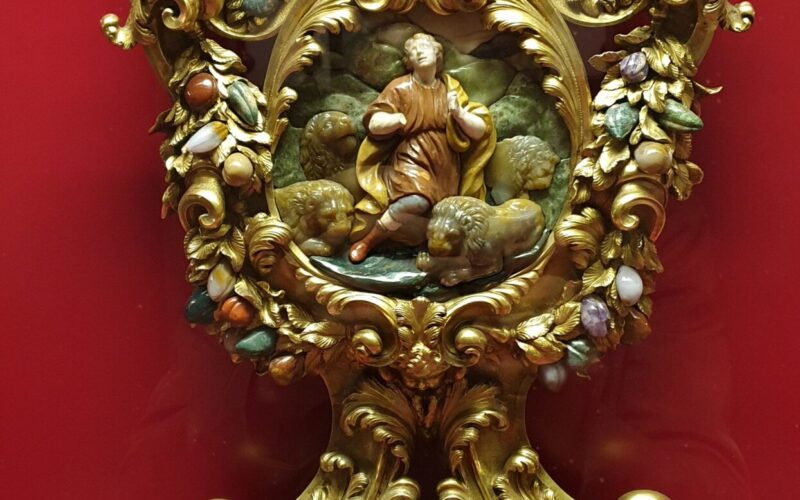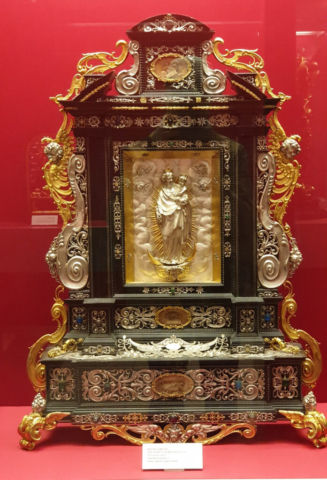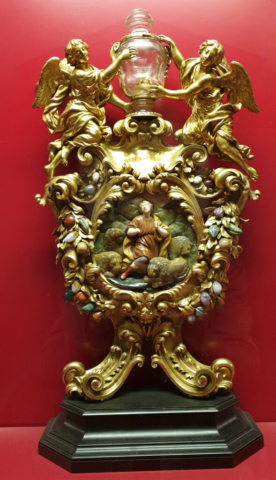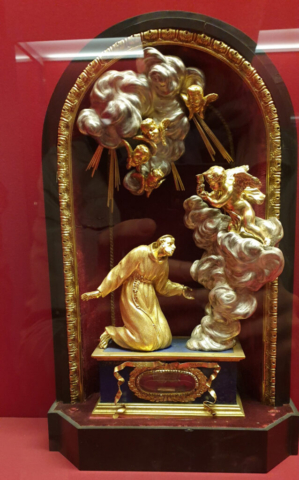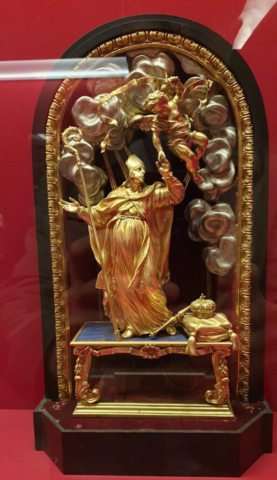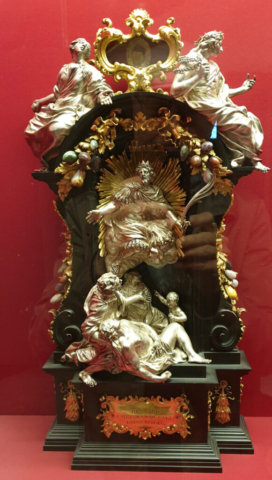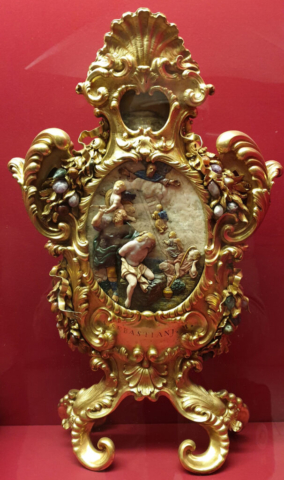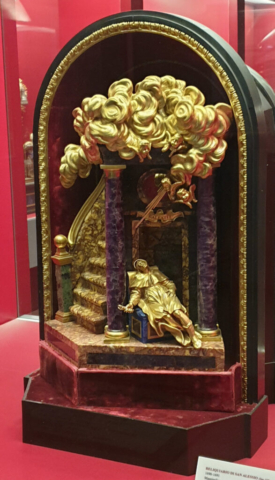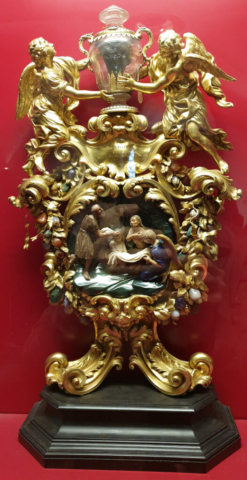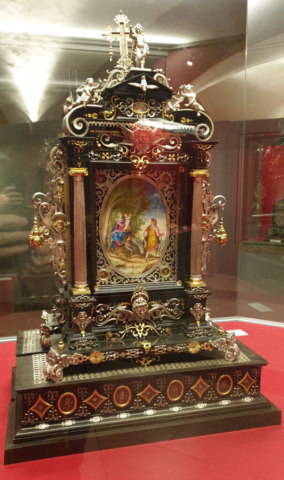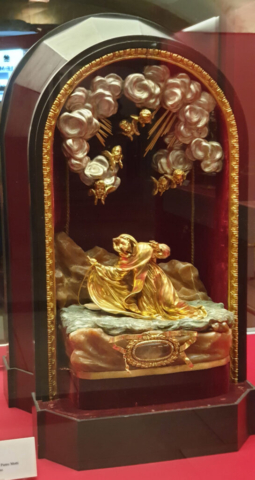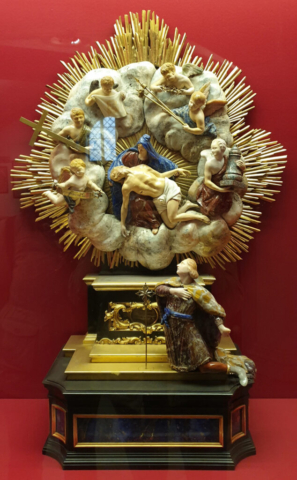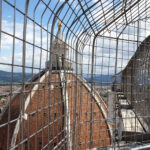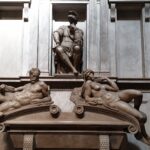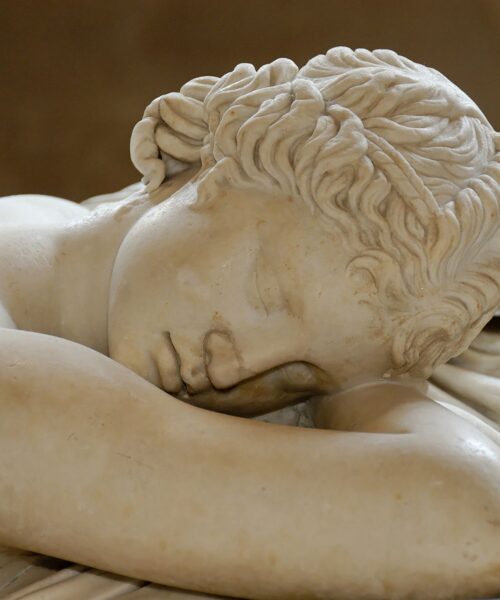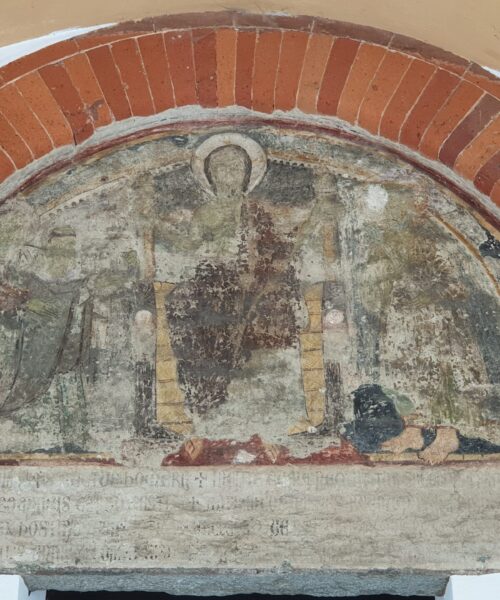Visiting the Medici Chapels adjacent to the Church of San Lorenzo in Florence is an experience full of unexpected discoveries. Among the marvels one expects to admire are the tombs of Giuliano and Lorenzo de’ Medici, masterfully crafted by Michelangelo in the “New Sacristy.” This is a masterpiece of Renaissance architecture and sculpture. Additionally, one anticipates entering the opulent Chapel of the Princes, an octagonal space topped by a dome reaching a height of 59 meters, the second grandest in the city after Brunelleschi’s.
A Treasure of Reliquaries
However, what visitors seldom expect to find in the crypt is a treasure of 17th and 18th-century reliquaries of remarkable craftsmanship. These absolute masterpieces, rarely seen in such quantity and well-preserved in a single space, are true jewels of sacred art, displayed to allow a complete appreciation of their splendor.
The Cult of Relics
Although today the cult of relics does not hold the same significance as in medieval times or even just 50 years ago, often considered superstition or at most “popular religiosity,” they still command respect. Relics, whether parts of a saint’s body or a common person’s, belonged to individuals who were once alive and thus always deserve respectful treatment.
Authenticity and Devotion
It is reasonable to assume that not all remains truly belonged to saints, just as many “contact relics” (objects used by or that had touched the saint) might not be genuine. For instance, it is said that if all the pieces of wood attributed to the cross of Jesus were put together, one could build an entire ship, and with the nails found, one could open a hardware store. Nevertheless, the Church’s Magisterium has always defended the cult of relics, from the Council of Nicaea (787 AD) to the Second Vatican Council.
The Significance of Veneration
Venerating a body or parts of it belonging to a saint is like worshipping Christ himself, as the saint, to become one, had welcomed Christ within. This belief led to burying the mortal remains of saints in early churches to venerate them in their tombs. Later, as not everyone could make pilgrimages to distant places, the remains were dismembered and distributed to various important churches and abbeys, as well as to nobles, princes, and kings.
The Art of Reliquaries
If a saint’s corporeal remains contained Christ, they could not be stored in anything but regal containers. Hence, an art of crafting reliquaries emerged, creating masterpieces of goldsmithing and silversmithing. These chests, often very original in their forms, were adorned with precious stones and statuettes, designed to house the mortal remains of saints worthily and to represent the wealth and power of those who owned or donated them.
The Reliquaries of the Medici Chapels
The reliquaries in the crypt of the Medici Chapels partly come from the Royal Chapel of the Pitti Palace. Those commissioned by Cosimo III, created by specialized craftsmen working in the court’s workshops at the end of the 17th century and the beginning of the 18th century, stand out for their extraordinary artistic quality. Each piece tells a story of devotion, art, and power, reflecting the magnificence of an era when the sacred and the profane intertwined sublimely.
Visiting the Medici Chapels means immersing oneself in a journey through the history, art, and spirituality of Florence. Every corner of this place tells stories of faith and beauty, bringing to life the grandeur of the past and offering a fascinating glimpse into the traditions that shaped Italian culture.

